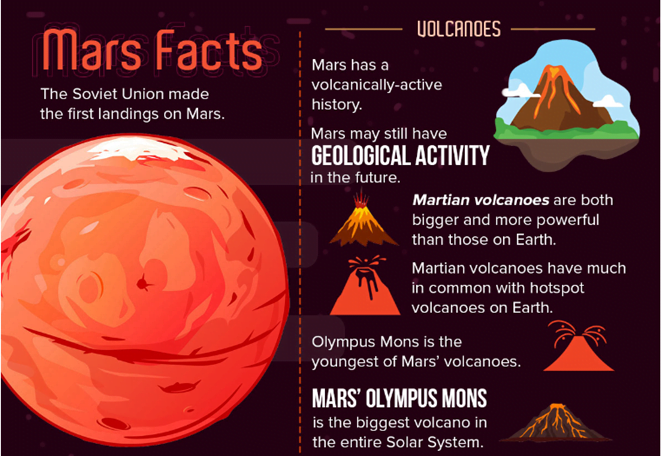Science and Technology
In news: Commemorating the day one of the most significant space missions to Mars was launched, November 28 is marked as Red Planet Day.
- On this day in 1964, the United States launched the space probe Mariner 4 on a course towards Mars, which it flew past in July 1965, sending back pictures of the red planet.
- This was the first time that a spacecraft undertook the first flyby of the red planet, becoming the first-ever spacecraft to take close-up photographs of another planet.
About Mars:


- Mars has two moons Phobos and Deimos
- In late 19th century, Italian astronomer Giovanni Schiaparelli claimed to have observed linear patterns on the surface of the planet that he called canali.
- This was mistranslated into English as canals, leading some to believe canals were built by intelligent beings on Mars — an early instance of Mars being thought to have life, similar to Earth.
- 1964 Mariner 4 showed lunar-type impact craters, some of them having frost.
- A television camera took pictures of about 1% of the planet.
- Mariner 4 lasts about three years in solar orbit
- Viking missions of the 1970s and the 1980s carried out the first chemical analysis of Martian soil, as well as four biology experiments to detect biological activity.
- Scientists hypothesised that certain meteorites might have a source region in Mars.
- In 1984, a study showed that the isotopic composition of rare gases (Xenon, Krypton, Neon and Argon) matched the isotopic ratios of the Martian atmosphere measured by the Viking spacecraft.
- Odyssey, 2001 and water on Mars: Gamma Ray Spectrometer on board the Mars Odyssey spacecraft detected a fascinating hydrogen signature that seemed to indicate the presence of water ice. But there was ambiguity – this was because hydrogen can be part of many other compounds as well.
- NASA’s Phoenix landed on the Martian North Pole in May 2008, and survived for about 150 days.
- The robotic arms of Phoenix scooped soil and ice from the surface, heated the material in eight ovens, and measured the composition of the gases with a mass spectrometer.
- The Phoenix mission established conclusively that the initial discovery of hydrogen by Mars Odyssey in 2002 was indeed water ice.
Mars missions:
- NASA has a lander (Mars Insight), a rover (Curiosity), and three orbiters (Mars Reconnaissance Orbiter, Mars Odyssey, MAVEN)
- India’s Mars Orbiter Mission (Mangalyaan-1)
- A technology demonstration venture — carried five payloads (total 15 kg) collecting data on surface geology, morphology, atmospheric processes, surface temperature and atmospheric escape process.
- UAE – Hope
- study the Martian atmosphere
- address question of how and why Mars lost its atmosphere
- EU has 2 orbiters (Mars Express and ExoMars Trace Gas Orbiter)
- China – Tianwen-1
Source: Indian Express
Previous Year Question
Q.1) The Mangalyaan launched by ISRO (2016)
- is also called the Mars Orbiter Mission
- made India the second country to have a spacecraft orbit the Mars after USA
- made India the only country to be successful in making its spacecraft orbit the Mars in its very first attempt
Which of the statement(s) given above is/are correct?
- 1 only
- 2 and 3 only
- 1 and 3 only
- 1, 2 and 3











